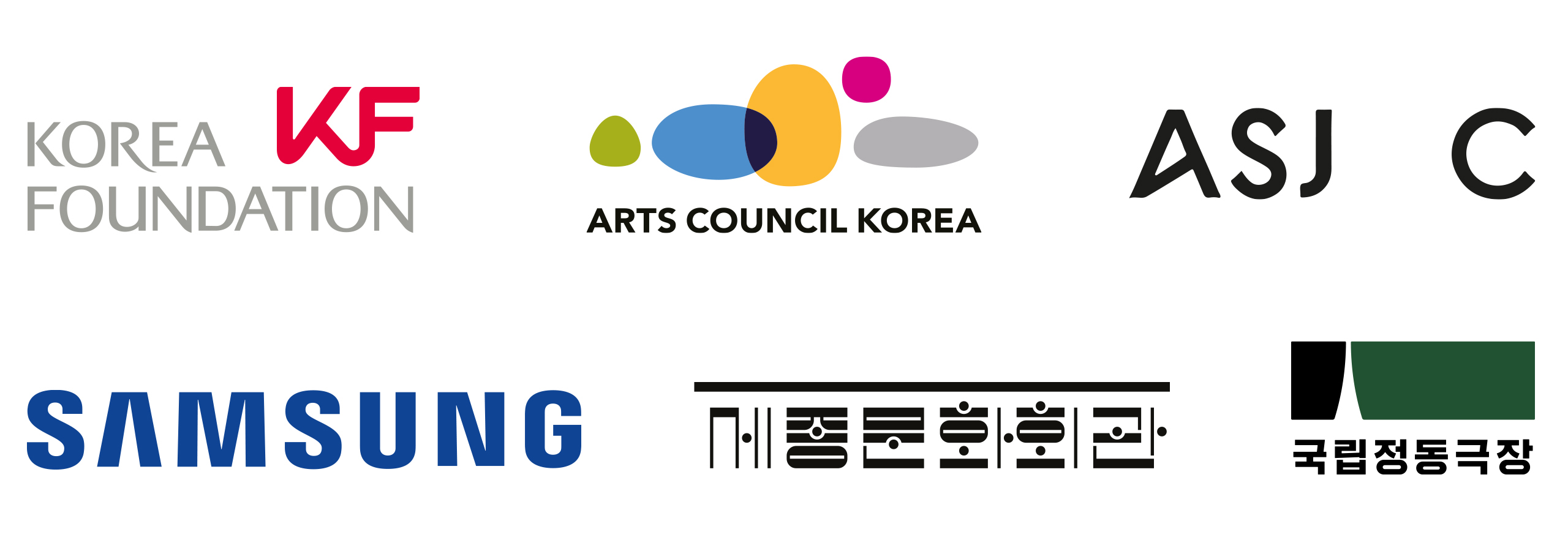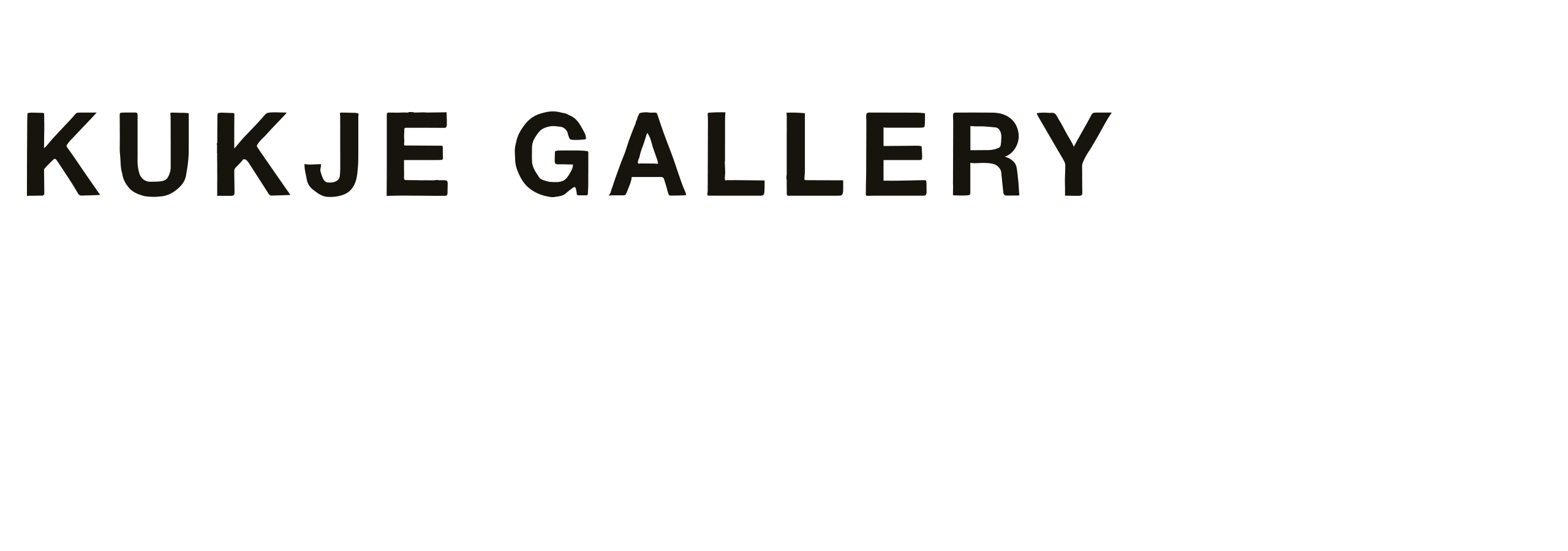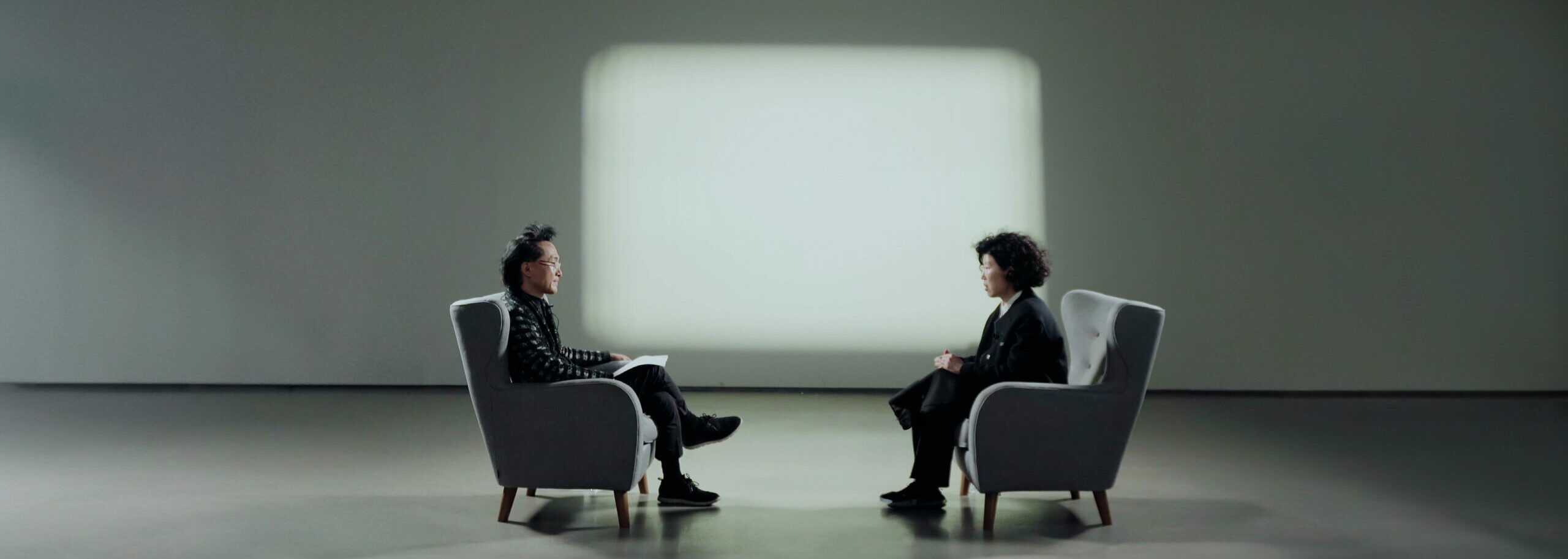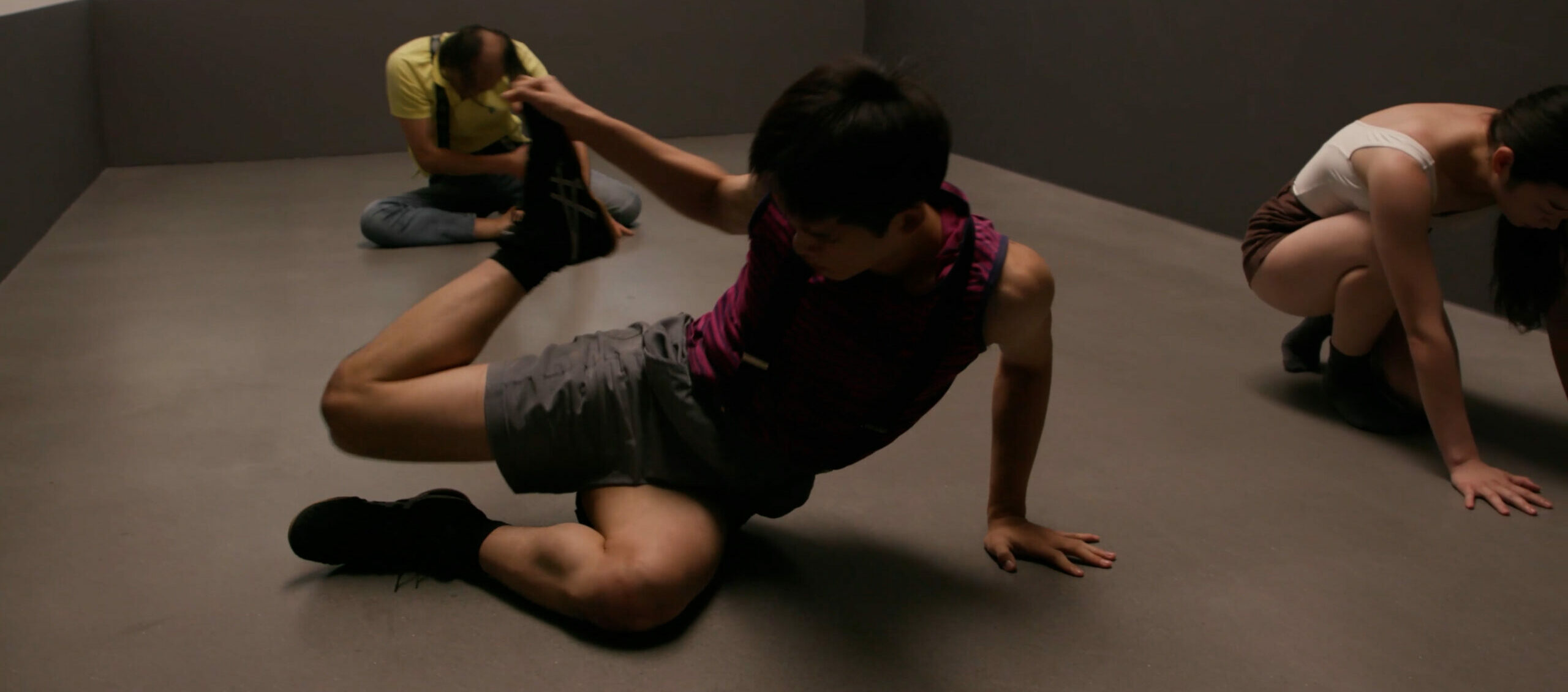Kwak Yungbin: It’s good to see you again after so long.
Cho Youngjoo: Hello.
Kwak Yungbin: Some viewers may already know me but, just to briefly introduce myself, I’m Kwak Yung Bin. I work as an art critic,
although I’m also interested in many other fields besides art. In particular, I wanted to ask some things in connection with the Nam June Paik exhibition, so I’ve come up with a few questions. Feel free to answer them however you like.
To start off, I’d like to ask about your own position
as an extension of the performing arts, and which aspects you hope to move forward with when thinking on your previous works or grappling with related issues.
Cho Youngjoo: It feels like I’ve been hearing myself described as a performance artist a lot lately. But before that, I was a video artist,
and before that a community artist and installation artist. So I’ve gone through a lot of different labels. I’ve worked with quite a wide range of media,
and I think that may be the reason they keep changing. Honestly, I don’t attach much significance to them. Whenever I want to try something different or experiment with my work, I think about what the right material for that would be. It could be sound-based or collaboration-based. It could be something small and handmade in plaster. So it’s different every time, and I haven’t really thought all that much about the labels.
Kwak Yungbin: Because performances take place in a particular setting, where people are viewing it live and in person, there are obviously going to be constraints on who can watch it. And of course, with video work, there are people who watch it after some time has passed, like me. In the case of someone like Nam June Paik, you have the idea of referencing something. From an artist’s perspective, if you really admire someone, you may want to kind of distance yourself from them. After all, no artist wants to hear that their work is similar to someone else’s.I’d like to hear your thoughts on that.
Cho Youngjoo: The work is from two years ago. Nam June Paik was such a remarkable figure. So the question of what connection existed between Nam June Paik and me was the biggest question for me from early on. But it turned out that there wasn’t any connection.Still, despite the lack of connection, I considered different aspects that might appeal to me. At the time, I was really interested in dual broadcasting systems and was developing a project along those lines. So it wasn’t really influence that I received from Nam June Paik. Rather, while researching reunions among divided South and North Korean family members, and the related programs aired on KBS for several months in the ’80s, I encountered Nam June Paik when working on that new project and starting to prepare for the exhibition. In terms of medium, Paik created works that were simultaneously broadcast live to different countries. So I was really drawn to that at first. To the medium. I was interested in how he planned it, things like his charisma as an artist, and his talents and design capabilities. Later on, I was thinking about what actual commonalities we shared, and I read an essay written by his wife where I learned a few different things. I was familiar with his image as this really successful artist, and the essay gave me insights into who he was both before and after that, in his later years. For example, there was the situation where he needed care due to his failing health, and he likely experienced feelings of longing for his homeland. So in his poor health, he would play pieces like “Garden Balsam” or “Arirang” on the piano with one hand, songs that really evoked a sense of nostalgia for Korea. I think that reading that was when I first discovered similarities to me, in terms of aspects that all of us might share as human beings.
And despite being such a famous and celebrated artist, [he] also experienced the struggles and process of creation. Creation is hard. It’s a process requiring us to suggest and show and experiment with new things, and that also seemed to resonate with me. There were certain similarities in terms of us living as artists. Those are the aspects that I decided I wanted to focus on.
Kwak Yungbin: With your contribution to this Nam June Paik exhibition you do seem to have really emphasized the technical element, the techne. So though it seemed like the focus was more on performance in the past, it felt like there was something of a shift in that. I sensed that your considerations were going in a slightly different direction. Do you have any comment you want to make about that?
Cho Youngjoo: I guess that in terms of the content and thematic aspects of my work,
I was progressing to things like care, women, and female body imagery, and right about the time of Techne & Musike, I focused on a lot of questions relating to media. Normally, dual broadcasting involves different locations in a museum whether it’s different floors or different rooms. There’s something very ironic about it. We ordinarily use that technology for live broadcasts between distant locations. But within the same building, or at a distance you can travel in the space of a minute, you’re missing something from each performance during that minute. That kind of situation is something genuinely “live.” So as I incorporated that situation into the work, there were the considerations in terms of media, with the liveness. It started with those questions, and there were also questions of place and audience,a lot of medium-related questions that came up around that time. That may have had to do with the pandemic situation, as well as certain characteristics of the art world that I was dealing with. So that’s the context that the work emerged from.
Kwak Yungbin: I mentioned that I couldn’t attend the opening performance. I ended up seeing it later on. I may be revisiting what I asked about earlier, but it seems like I missed a great deal by not seeing the opening.
Cho Youngjoo: So what you missed was the live performance. Even though you missed the live performance, you saw the video work, you saw Techne & Musike. So you did see it. The content is something we’re capable of grasping. But because the two media are so different, I feel like the viewer takes something very different away from it. So you ended up not experiencing what happened during the live performance. I see that as a matter of choice. For example, a work might be 10 minutes long, and we only watch one minute of it.So it was along those lines. You missed a big part of it.
Kwak Yungbin: So is one better than the other?
Cho Youngjoo: No, I don’t think there’s any one that takes precedence. I view them as equal. But there are also certain characteristics of the art museum. A video work is something that a lot of people can view over a long period of time. A performance isn’t like that.
Kwak Yungbin: It seems like the artist’s inability to control everything is kind of the default. So the question is how to respond to it in a different sense of a time, and also how the relationship with what we call the “medium” is defined in that process. So your ideas alone don’t allow you to control everything about your work. It’s kind of a strange way of putting it. In most cases, having control is good, but if not having control it creates some kind of possibility, I feel like there’s a role that the performance plays or a stature that it holds in that sense, a certain implication that’s present there. I’m also curious to hear your thoughts on that.
Cho Youngjoo: With my recent works, and my previous works as well, I tend to do a lot of collaborating. You have the performers, obviously, and the cinematographers. A lot of different people. Live broadcasting involves a lot of improvisation. Obviously, there’s my improvisation, but also improvisation by the directors, along with the creativity that everyone brings to it. So those things are all blended together. As you mentioned just now, an artist by their nature typically has certain ideas and plans where they’re controlling all the different aspects. But I don’t really see my work as being like that.And when you open it up, when it isn’t just a single artist but a lot of different people working together, you have to deliberately introduce aspects that are open-ended. In any case, when it comes to my work, I think that’s a really crucial characteristic.
Kwak Yungbin: Looking back from the current standpoint, there have been elements of music or, in a broader sense, sound that seem to have a certain importance in your work. To me, anyway, it appears that recently the focus has shifted in that direction a bit more compared with before. Do you agree with that, and could you share your thoughts on it?
Cho Youngjoo: I’ve been really interested in the performing arts from a young age, it feels natural for me to have a lot of different elements in my work, and that’s true for music too. When you’re working with video, sound takes on even more importance. I also think there are levels of understanding around just how deep and broad the realm of sound can be. So with things like sound quality and such, it feels like I’m just now starting to learn and perfect things.
Kwak Yungbin: You’ve brought up quite a few things that I didn’t even expect to hear. So listening to you has been really enjoyable. I hope that this will help our listeners in appreciating the exhibition. Thank you.
Cho Youngjoo: Thank you.








